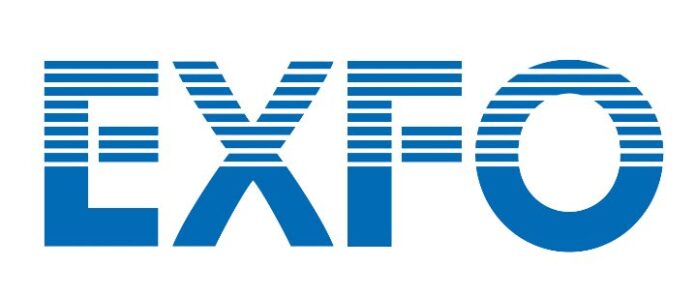EXFO picks up 33.1% stake in Astellia, plans a friendly takeover
Test company EXFO has purchased 33.1% of network performance analysis company Astellia for about 8.6 million Euros (around $10.2 million) and plans to launch an amicable takeover of the company.
EXFO purchased 25.4% of the shares from Astellia’s founding shareholders — mostly current executives — and another 7.7% from shareholder Isatis Capital, at a cost of 10 Euros per share — a premium of almost 45% over Astellia’s closing share price on August 30th, when the transaction was announced. EXFO said that the transactions “[allow] for a friend industry combinatino with strong support from Astellia’s management and reference shareholders” and that the company’s board has expressed its support. Next, EXFO says it will make an all-cash, voluntary public offer for Astellia’s remaining shares; that transaction will be subject to regulatory approvals.
“Astellia’s board of directors has expressed its support for EXFO’s firm offer and the agreements to be signed in order to complete a transaction that values the entirety of Astellia’s equity (on a fully diluted basis) at approximately €25.9 million,” EXFO said — which works out to nearly $31 million. The deal is expected to close around the end of the year.
“This investment in Astellia is in line with our strategy to increase our critical mass and our client base, and to expand our addressable market in the global analytics and service assurance industry,” said Germain Lamonde, executive chairman of EXFO’s board, in a statement. “If our public tender offer is successful, we’ll be able to combine Astellia’s solutions and services with those of EXFO and become a world leader in the network monitoring and analytics sector and target growth opportunities such as network virtualization, 5G and the Internet of things.”
Astellia won a contract earlier this year with Telefonica Group for geolocation-based Radio Access Network optimization. Its signature analytics solution is Nova, which it enhanced with advanced video quality of experience information this year.
In other test news:
–Rohde & Schwarz is aiming to address the need to test “5G” systems over the air, particularly at millimeter-wave frequencies. The company said that a number of factors are expected to drive the need for more OTA testing in 5G. One is the need for directional beam-forming or beam focusing to utilize mmwave effectively, so test systems must be able to “handle three-dimensional center-of-beam and off-center-of-beam measurements in a radiated environment with extremely accurate positioning systems can properly characterize a 5G device. This includes the measuring of EIRP/EIS, beam transmit signal quality, beam receive performance, beam acquisition timing and beam tracking performance, and side lobe measurements effecting total radiated power including in-band and out-of-band spectrum emissions related performance,” the company noted.
In addition, R&S said that there will be cabling issues due to the increased level of component integration in future 5G devices, which will “[make] it almost physically impossible to connect the [devices under test] to the test equipment by cables. And even if cables could be connected, cable costs and cable losses at mmW frequencies would be prohibitive. DUT fixtures supporting mmW can be extremely fragile,” according to Rohde & Schwarz.
R&S will be spotlighting its 5G OTA test system at the upcoming Mobile World Congress Americas show in San Francisco.
–Anritsu and Teledyne LeCroy have collaborated on a new PCI Express test solution that can support testing ranging from PCIe 3.0 to 4.0, with the ability to support expansion up to PCIe 5.0 at 32 Gbps — which they say is an industry first for an end-to-end solution. The offering utilizes Anritsu’s Signal Quality Analyzer (SQA) MP1900A Bit Error Rate Tester along with Teledyne LeCroy’s LabMaster 10Zi-A oscilloscope and QPHY-PCIe4-Tx-Rx software for integrated circuit, device and link equalization testing, among other features.
Paul Innis, CP and GM of Anritsu, said that the combined solution “fills the market void for a complete physical layer PCIe Gen4 test system that can be easily expanded to PCIe Gen5 as the market continues to develop technologies for high-speed networks,” said Paul Innis, Vice President and General Manager, Anritsu Company. Conrad Fernandes, VP of sales for Teledyne LeCroy, noted that PCIe Gen5 is “expected to emerge within two years” and that the two companies have worked on the solution with a “clear and efficient upgrade path” in mind for PCIe Gen5.
–Ixia launched a new internet of things test offering for cellular IoT solutions, focusing on support of Third Generation Partnership Project IoT standards include enhanced Machine-Type Communication and narrowband IoT.
Ixia noted that IoT standards being developed for 5G are preparing for enormous density of IoT devices — up to 1 million devices per square kilometer. “Until 5G is ready, LTE carriers need to head off the avalanche of new cellular use with software upgrades that enable them to employ existing base stations for IoT connectivity,” the company said. Its new IxLoad-Wireless simulates IoT network traffic in order for operators to test both network and devices, either examining nodes in isolation or testing the entire system. IxLoad-Wireless will be part of Ixia and parent company Keysight Technologies’ showcase at MWC Americas.
–RootMetrics did a fresh round of testing in Atlanta, Ga. recently and found a shake-up in results among the national carriers. Verizon won RootMetrics’ network reliability award outright, rather than tying with another carrier, for the first time since RootMetrics began testing that category.
T-Mobile US also saw gains, taking first place in network speeds and beating out previous winner Verizon. T-Mobile US network speeds reached a median download speed of 33 Mbps, compared to Verizon in second place at 31.7 Mbps.

